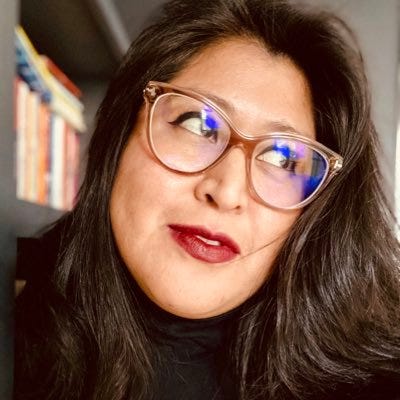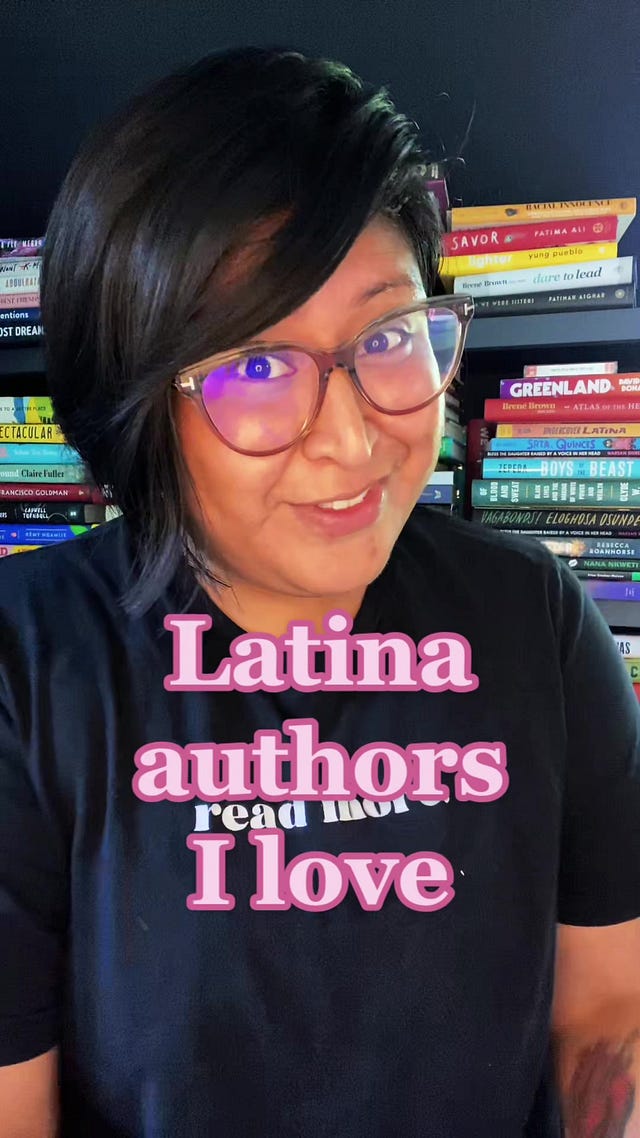Five Questions with Book Influencer Lupita Aquino
We talk social media and the importance of reading diversely
I recently received an email from the D.C. public library announcing an event with “local reading enthusiast” Lupita Aquino. I had two immediate reactions: 1) I know her! and 2) What a great title.
Lupita is everywhere. She launched a bookstagram (an Instagram account focused on books) seven years ago and now has nearly 45,000 followers there. She’s recently branched out to TikTok, where she posts near-daily videos about books she loves, and writes a newsletter highlighting books by Hispanic/Latinx/e authors.
Lupita doesn’t consider herself an influencer necessarily, but “somebody that people come to if they might be interested in what to read next.” She was kind enough to chat with me about the power of TikTok and why she believes so strongly in reading books by diverse authors. Our conversation has been edited and condensed for clarity.
Why did you decide to start your bookstagram?
I started it because my friends and family were kind of tired of listening to me talk about books so much. There was no one to talk to about all the books I was reading because I was going through them so fast. I wasn’t really connected to any sort of community yet.
Instagram was the thing people were doing then, and I launched my account thinking it was going to be unique. I quickly found out I was wrong — which was great — because there was a huge community on Instagram of people who just wanted to talk about the books they were reading.
You recently joined TikTok, a platform that has become hugely influential in driving book sales. What do you make of the app?
I admit in the beginning I was very skeptical. Instagram has been around forever and it never gets any press, and on TikTok, there’s no ability for people to have long discussion because the videos are mostly 60 seconds or less.
But now that I’ve spent a lot of time there, it’s easy to see how you can create community. You become more accessible to people and the algorithm makes it easier to go viral. That makes a very powerful tool.
It’s pretty cool to see a video have 200 thousand views and have people telling you ‘I ordered it from my library’ or ‘I’m picking it up today from the bookstore because of you.’ Knowing that there’s so many people reading your favorite book … I think that’s where the excitement around BookTok comes from, it’s the possibility of immediately connecting a large audience to a book. Before, unless it was on The New York Times bestseller list or an Oprah pick, that would rarely happen.
How did becoming a bookstagrammer change your reading habits?
Things are coming full circle for me because on TikTok now, I’m asked if it’s a bad thing to not pay attention to the race or ethnicity of an author. I immediately think back to who I was before I started on Instagram. I rarely thought about an author’s race. My account shows I’ve had an evolution.
I think it’s important to diversify what we read because it helps us grow as people and it’s personally helped me do that. That’s why I feel so passionate about championing underrepresented voices because they’re often not given the opportunity or the marketing or the spotlight [compared to] white authors.
Personally, I didn’t read my first book by someone who was Latinx until I was in my late teens. I don’t remember reading a character that I really connected to. For the longest time, I was just kind of inserting myself in the lives of white characters and white families.
Do you see signs of progress compared to when you were a teen?
I definitely do. I was part of a chat with YA author Jason Reynolds and the owner of Loyalty Books because the store was being featured in spotlight on Good Morning America for Black Business month.
There were also four teens there and I kept thinking ‘what would it have been like to be able to grow up with access to so many different stories?’ Then I realized, I don’t know their lives, who is giving them books or providing them things that will help them see themselves in books, helping them connect the dots about who they could be in the future based on what they’re reading.
But I did leave there feeling so hopeful because they had amazing books that they loved to read in their age range.
Lastly, any books you want to recommend?
I'm really excited for people to read How Not to Drown in a Glass of Water by Angie Cruz. That book made me cry. It made me weepy. I really loved The Man Who Could Move Clouds. It's a memoir by Ingrid Rojas Contreras. That was really stunning. The way that she was able to weave back into her family’s past and her history and her present was just gorgeous.
Thanks to Lupita for chatting with me. You can find her on Instagram, Twitter, TikTok and Substack.
What to Read If is a free weekly book recommendation newsletter. Need a rec? Want to gush about a book? Reply to this email, leave a comment or find me on Twitter @elizabethheld.
If you’re reading this on Substack or were forwarded this email, and you’d like to subscribe, click the button below.
Disclosure: I am an affiliate of Bookshop.org and I will earn a commission if you click through and make a purchase.







Two wonderful people in a wonderful interview — this was great, Elizabeth and Lupita!
Great interview! I definitely related to the person who asked if they needed to pay attention to the race of the author they were reading—I used to not, assuming that I read pretty diversely, but after working in publishing and heavily in the book industry, understanding that big marketing dollars are still going toward white, cis authors, it's easy to not pay attention and only end up reading white authors. I now actively seek out authors of other races and try to be a good ally by listening to creators of color who do the work year round and do my own research into how I can read more diversely and am always learning. Lupita has been someone I always know I'll get amazing book recommendations from!